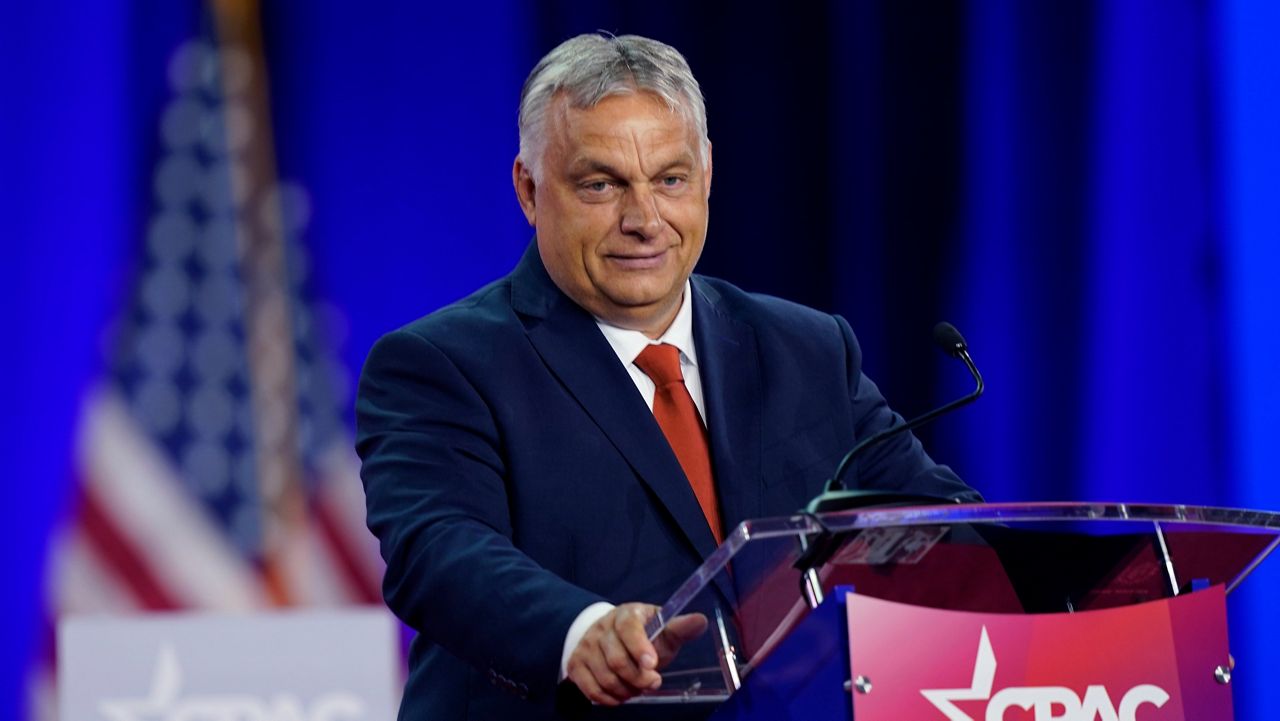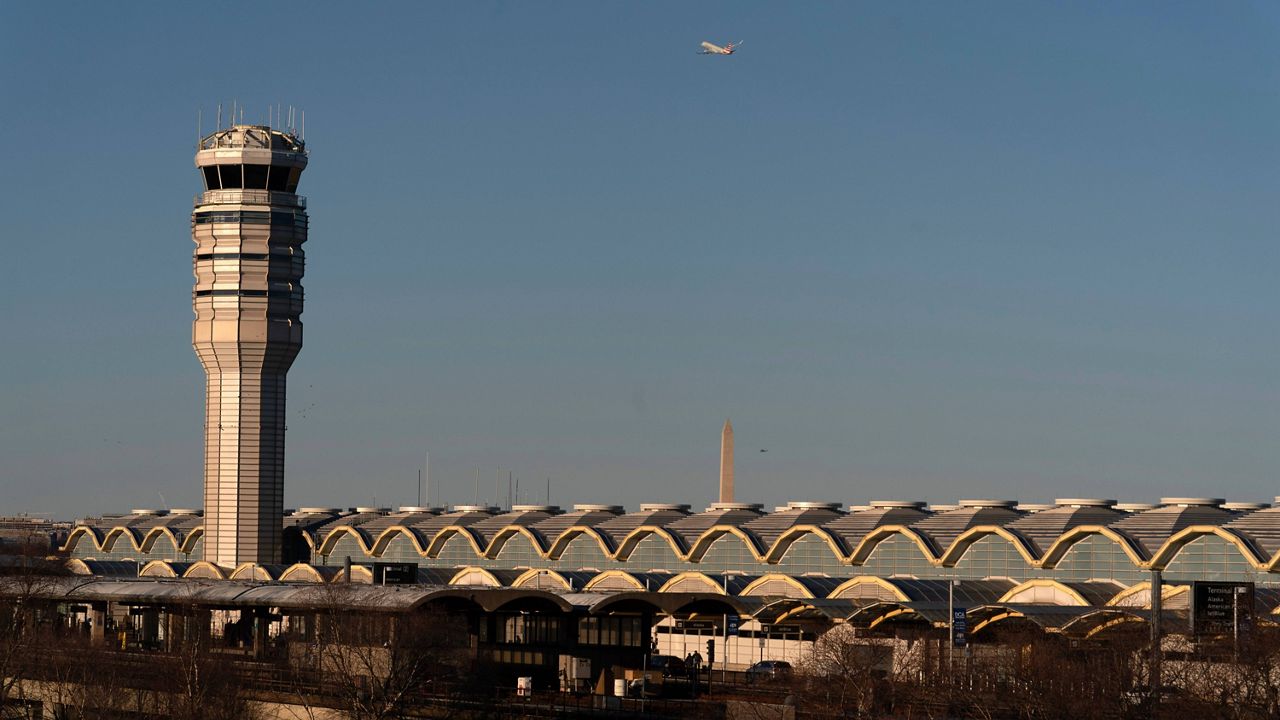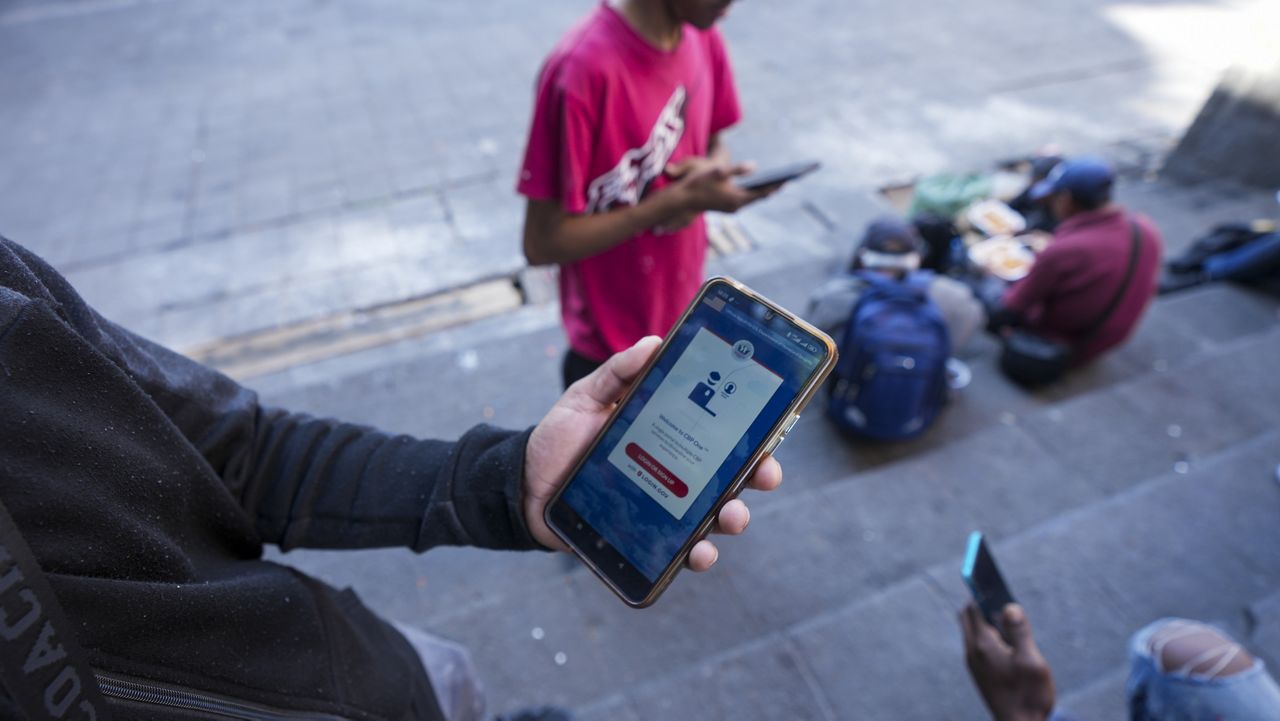Education Secretary Miguel Cardona is reaching out to state governors who have banned mask mandates for schools, he told Spectrum News Tuesday, citing concerns that high case rates in those same areas could impact the return to in-person learning.
“We have calls out in those states,” he said in an interview. “We're going to work with all states, including states that are struggling a little bit to follow the guidance that CDC is recommending. At the end of the day, if we work better together, the students in those states will have success.”
He added: “I worry that in those communities that are unmasking too quickly or minimizing the importance of the mitigation strategies — we might see more of a disparate impact in terms of return to school.”
The secretary’s comments came as some school boards around the country continue to debate whether to require masks for all kids regardless of their vaccination status, especially in states like Florida and Texas where governors have banned mask mandates in school.
Cardona said he hopes parents still follow public health guidance.
“The message to the parents would be to expect health and safety to drive the conversation,” he said. “Make sure that you're following the rules that you know can keep your children safe.”
The Department of Education released Monday a Return to School Roadmap that includes guidelines for schools to welcome students back safely, a checklist for parents, and recommendations about how to fight the learning gaps created by virtual learning, including through a focus on mental health.
The department’s top two recommendations: if they’re eligible, vaccinate children before the school year begins and implement universal masking indoors, per Centers for Disease Control and Prevention guidelines.
“We know what works,” Cardona told Spectrum News. “As a parent, I sent my own children to school last year because I knew the system had good mitigation strategies.”
The infectious nature of the delta variant makes kids more susceptible to spreading COVID-19 than they were before, experts said, and the number hospitalized has ticked up in recent weeks.
“Children are less likely still to get sick and transmit virus as compared to adults right now, but they're probably more likely to get sick and more likely to transmit then than they were last year,” said Dr. Michael Smith, a professor of pediatrics at Duke University School of Medicine and an infectious diseases expert.
“We know that wearing a mask reduces transmission, and we know it's safe,” he summarized.
But that mitigation tool is now optional for schools in states including Florida, Texas, South Carolina and Arkansas, where governors have outlawed mask requirements.
“We didn't have a spread in our school [last year],” said Anna Fusco, president of the Broward Teachers Union in south Florida, crediting masks.
Broward County Public Schools reversed its decision to require masks Tuesday after Florida Governor Ron DeSantis threatened to withhold the district’s funding. He signed a Friday order on Friday to prevent the mandates.
“What are we setting a precedent that every time the governor doesn't like what a school board does, he gets to come in and override it? That's just the abuse of power,” Fusco said, adding: “He must not be visiting hospitals and seeing the beds that are being filled.”
Florida reached its peak number of hospitalizations on Tuesday, with Broward and Dade counties leading case numbers.
One in three cases reported in the U.S. last week were in Florida and Texas, the top COVID adviser for the White House said Monday.
While some states are banning mask mandates in schools, other officials are taking a different approach. New York City Mayor Bill de Blasio announced last week that the city’s teachers would need to either be vaccinated or undergo weekly testing, and other cities have followed suit.
Cardona on Tuesday applauded mandates like those in New York City, saying it proved de Blasio’s “commitment is to get our students back into school safely, where they belong, where they work best, where they learn best.”
“The president has been very clear about vaccinations as one of the best levers we have to combat COVID-19 spread,” Cardona went on to say. “When I see mayors and chancellors and state chiefs taking on leadership roles and setting up clinics and really getting the word out, to me it's a sign that they want their children back to school safely, and that they care for their staff.”
A majority of teachers have gotten the vaccine, according to data from the National Education Association, which found that 86% of members it polled in June had received at least one dose.
The American Federation of Teachers, which represents hundreds of thousands of educators across the U.S., has called for its members to get vaccinated and stressed the importance of the shot but has refrained from calling for mandates.
“Vaccinations must be negotiated between employers and workers, not coerced,” AFT President Randi Weingarten said in a statement.
The pandemic has exacerbated a teacher shortage in the United States, with hundreds leaving the profession last year and others saying 2020 led them to consider leaving earlier than planned, according to the National Education Association.
Fusco, the Broward Teachers Union president, said they lost dozens in the county last year.
“Lots of reasons pertaining to COVID. It was very extreme,” she said.
Other schools have cited a lack of guidance counselors, bus drivers and substitute teachers.
Cardona said Tuesday that the $122 billion for schools in the March COVID relief bill is meant to help hire teachers and staff.
“The funds from the American Rescue Plan are being used to incentivize in many ways and really build the workforce that we need to have our students be successful,” he told Spectrum News.
But for areas where hiring isn’t due to lack of funds but rather a lack of enough interest, Cardona said he’s confident the other elements of the president's agenda will boost the teaching profession down the line.
“I know some places the shortages are greater than others,” he acknowledged. “We recognize that money alone won't do it. But that's why we're really supporting efforts to build teacher recruitment programs, help teachers with their higher education expenses through grants. This is all part of the agenda.”
Many schools have also seen decreased enrollment for in-person learning, particularly in majority minority communities who have already borne the brunt of COVID-19.
“We know that there's more hesitancy in our urban centers, in our more densely populated areas because quite frankly, they experienced COVID differently and more negatively in terms of loss,” Cardona acknowledged, adding: “We are going to be paying attention to see that the return to school is even across the board.”
In March, the federal government published its first assessment of school reopenings after monitoring fourth and eighth grade students across 7,000 rural, urban and suburban schools nationwide. While the report found an overall increase in full-time, in-person classroom learning across the board, experts noted a “larger proportion of White students continued be enrolled full-time in-person than their Black, Hispanic, and Asian peers.”
The amount of non-white students returning to full-time, in-person learning remained comparatively low through May, the latest month for which data is available.
As of May, 66% of white fourth grade students had enrolled in full-time classroom learning, compared to 41% of their Black peers, 45% of Hispanic students and only 27% of Asian students.
Cardona said the administration is taking a number of steps to address the disparity, and to ensure the health and safety of all students and teachers. Not only will the government help set up vaccination clinics at schools, but they will continue to conduct outreach and education on appropriate community-based mitigation strategies.
“Every family has the right to send their children to school and not worry about their health and safety,” Cardona said. “We have to do everything in our power to make sure we're reopening safely, following the roadmap and getting our kids back in the classroom.”
The coronavirus outbreak has disproportionately impacted Black, Hispanic, and Native Americans in terms of hospitalizations and deaths. Reasons are complex, but the disparities stem from multiple sources: people of color are vastly overrepresented in frontline industries, and are therefore exposed to the disease at a much higher rate.
Those effects are now being felt in the classroom, as a lack of vaccine access and a historic distrust of the medical field within some minority communities has also made it harder to reach those populations.
Watch Spectrum News' full interview with Education Secretary Dr. Miguel Cardona above.










